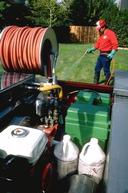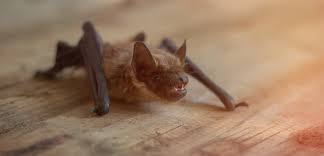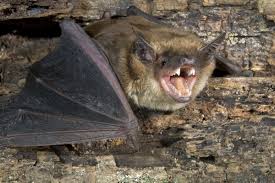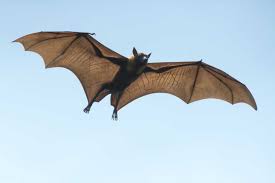Pest Control Everything’s
like to think that we know a thing or two about pest control. And we think that we know a thing or two because we’ve seen a thing or two. Our pest control guides are based predominantly on our own real-world experiences using hundreds of pest control products, tools, and equipment in professional applications, data collected in conjunction with those applications, independent research, industry training, and continuing education.
It is important to note, however, that we are not entomologists and we are not experts on every conceivable insect in every conceivable geography or environment. The views provided in our guides are intended for informational purposes only and often include generalizations about what might typically be optimal in typical situations. Because every pest infestation has its own set of unique challenges and variables, exceptions often exist.
Pest Control Everything advises all aspiring do-it-yourself pest controllers to consult with licensed pest control operators in their area before starting an individual treatment program.
Best All-Natural Pest Control Guide?
Perhaps no other facet of pest control has risen in recent popularity as feverishly as all-natural or organic applications. People across the United States have become increasingly aware of the potential concerns of pesticide exposure to people, pets, and the environment. This conscientiousness has heightened demand for less-toxic pest control options.
When it comes to tackling an ant problem, we’ve got a lot of variables to consider and a lot of products to choose from. Ant gel baits, bait stations, dusts, foams, liquid concentrates, ready-to-use sprays, granular baits, granular insecticides, and on and on and on.

A guide of agricultural plant pest managers
Agricultural Plant Pest Control is a training manual for pesticide applicators working within the Commonwealth of Virginia. It is intended to support persons preparing for certification in Commercial Pesticide Applicator Category 1A, Agricultural Plant Pest Control. Certification in category lA is a base requirement for certification in category 1 C (Fumigation of Soil and Agricultural Products) and category 1 D (Chemigation). After certification, applicators will find this manual a good resource for agricultural crop pest identification and management decisions they make throughout
This manual replaces Agricultural Plant Pest Control: A Training Program for the Certification of Pesticide Applicators (reprinted September 1984). It discusses the identification and control of important pests in the production of agricultural crops, in pasture/forage lands, and on noncrop (fallow) agricultural land. These pests include arthropods (insects and mites), diseases, nematodes, and weeds. The sections on pest identification are specific for the Commonwealth
The same is true for the pest-control options described. Agricultural Plant Pest Control is not a field guide, nor is it a comprehensive guide to pest control. The pests described are only a sampling of the important pests
However, the pest identification and management sections of this manual will help you identify and solve many common agronomic crop pest problems. In addition, these sections emphasize the importance of finding the cause of a problem before taking action. They also model the decision-making process in pest management. For more information about specific pests and pesticide recommendations, contact your Extension office or consult the most recent Pest Management Guides (see “Acknowledgments,” below).
Certification in Agricultural Plant Pest Control is required of commercial applicators working for hire who treat agricultural crops for growers and producers. It is also required for government employees who manage agricultural crops as part of their job duties. Examples include people working for the Department of Correction& and some nonresearch employees
Hiring a Pest Control Company
If you do not have the time or ability to research your pest problem and safely apply the appropriate procedures and materials to control it, you may want to hire a pest control service to do the job for you. A licensed professional also has access to some products not available in retail stores. To be effectively managed, many pest problems, like termites or problems on large trees, require specialized equipment, pesticides, and technical training.
Although professional services may seem costly, the investment may be worth it to solve a serious problem. A pest control professional, who practices integrated pest management methods and keeps up-to-date about the latest technologies, can provide you with the safest and most effective management strategies. If toxic chemicals are part of the pest management method, it is often safer for your family to have them handled by a professional.
Identify the pest and do some research about how to control it following the steps below.
Check the online UC Pest Notes for information on managing the pest. Based on this information, determine if management is needed and if it is, whether or not you can safely and effectively address the problem yourself.
It may be possible for you to make changes in your landscaping or home design to permanently exclude or reduce pests, and this can eliminate the need for professionals, even for serious pests. Examples would be to take out problem tree species and replace them with pest resistant ones or treat your pets with spot-on treatments for fleas and eliminate the need for treating carpets or outdoor areas for fleas.
Pest management professionals often have access to more effective pesticides or other management tools not available to consumers. If this is the case for your pest, you may want to consider professional help.
If repeated applications of a pesticide or procedures such as setting traps for skunks are required, ask yourself whether you have the skills or time to follow through. If not, hire a professional.
If toxic chemicals or sophisticated application equipment are required, it is often best to hire a professional.
Obtain recommendations from neighbors, friends, or family about pest control services they have used. Call at least three companies and consider their methods as well as their customer service policy:
Find out what types of services the company offers. For example, do they provide monthly spray contracts or do they offer an Integrated Pest Management (IPM) approach that includes nonchemical methods?
Find out if least-toxic alternatives are available to control the pest. Ask the company if these least-toxic pesticides or baits are used when appropriate. For example, confirm that exclusion methods, baits, and traps are employed against cockroaches (rather than sprays) and that baits (rather than sprays) are used for ants. For other examples of least toxic approaches, look at the UC Pest Notes.
Make sure the company has the required licenses, registration, certificates, and insurance.
Ask the company to inspect the site.
The company may charge a fee to do this inspection, but for that fee they should provide you with a written diagnosis of the problem or an identification of the pest. They should show you where the pest is causing the problem and discuss how they plan to control it. The company should also provide you with details regarding the course of treatment(s), the pesticide to be used—if required, the frequency of inspections and treatment, and an estimate of the cost of implementing the treatment plan. They should also provide you with information about the safety of any products they may apply and any precautions you would need to take, such protecting pets and children.
A Property Manager’s Guide to Professional Pest Control
As a property manager, you face an endless number of challenges in your effort to provide tenants with a clean, safe, and healthy environment. One of the ten thousand responsibilities you face is keeping pests out of your buildings. To fulfill this responsibility, you need a go-to pest company.
There are a lot of pest control companies out there, however, and many of them have different specializations. How do you know which one is right for you? What are the right questions to ask them? How do you even know where to look to find the right questions? Well, maybe we can help. The next time you need quality commercial pest control
Find a service that knows in your specific pests
Your biggest weapon in the battle against pest infestations is knowledge. Learn which pest species are most common in your area. Research the best ways to prevent them from entering your buildings. The more you know about the pests plaguing you, the more you can ask a prospective pest control pro.
Once you know your enemy, research your ally. See what each prospective pest control company has to say about their approaches to your problem. Do they have a pest library entry on it? Do they describe how they’d go about treating for your particular pest? How they’d treat safely while inside your particular type of building? You should be totally assured your pro can handle your specific problem before you commit. Keep researching, calling, and asking questions until you are
Look for a company that offers integrated pest management
Integrated pest management (IPM) is a specialized pest removal process that does more than just remove pest infestations. Instead, IPM professionals use expert knowledge, exclusionary measures, and reactive monitoring to both treat current infestations and prevent future ones.
National Pest Control Agencies publications
National Pest Control Agencies produces a range of publications with up-to-date, practical information on the control of vertebrate pests. Our publications are written with the input of pest control specialists and are regularly updated to ensure they reflect current best practice.
There are four categories of NPCA publications:
‘A’ Series – Best practice guidelines for controlling and monitoring vertebrate pests
‘B’ Series – Information about regulations relevant to vertebrate pest control
‘C’ Series – Public awareness materials
‘D’ Series – Schools education material
These publications are used by:
vertebrate pest control contractors;
local government and DOC operations staff undertaking vertebrate pest control;
landowners wanting to control vertebrate pests on their land;
people in the general public with an interest in pest control;
teachers of primary and secondary school students;
institutions running training programmes in the monitoring and control of vertebrate pests.
A Technical Advisory Group reviewed a number of NPCA publications and updated the following:
A1 Possum Population Monitoring Using the Trapcatch, Waxtag and Chewcard Methods
A3 Private Landowners’ Guide to Possum Control, Control Tools and Techniques
B1 Legislation Guide: User Guide to Legislation Relating to Terrestrial Pest Control


